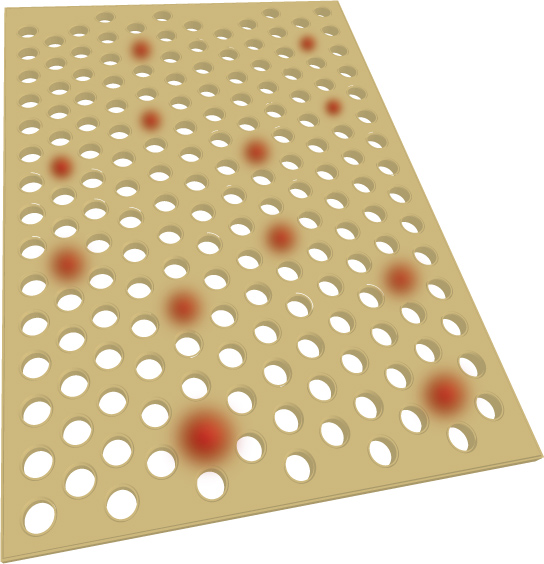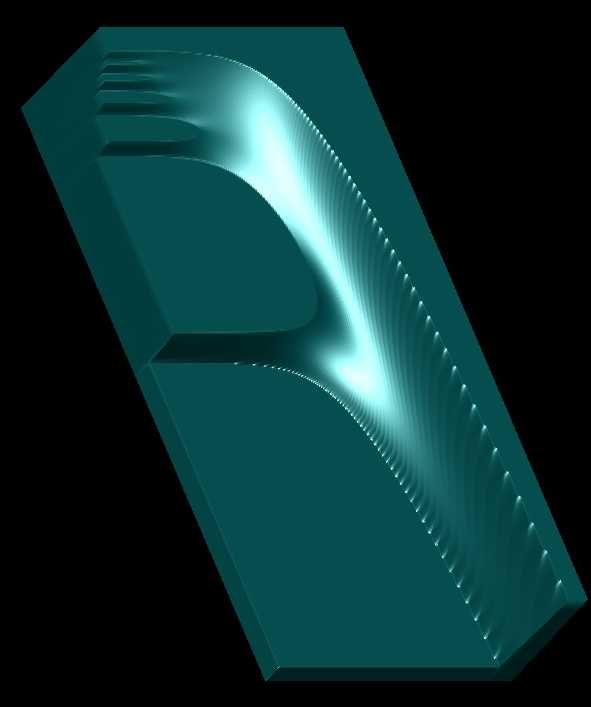| Quantum Phase Transitions of Light: Using condensed matter and quantum many-body physics to control photons and make a photonic "material"
Download the article this summary is based on: Andrew Greentree, Charles Tahan, J. Cole, L. C. L. Hollenberg, Quantum phase transitions of light, Nature Physics 2, 856 - 861, (December 2006).
The original preprint can be found (for free) on the arxiv: cond-mat/0609050.
As physics and engineering extend their reach to the control of single excitations of nature, we gain the ability to explore and even design the interaction of matter and energy in fundamentally new ways. One of the most interesting opportunities this presents is controllable interactions between many quantum particles --- such as electrons --- which is traditionally the realm of condensed matter physics. The questions we asked ourselves were these: Can we also do this with light? Can it be useful? We show that the answer is YES!
 Cover Letter Cover Letter
Condensed matter and quantum optics are two branches of physics that attempt to understand the complexities of interacting quantum systems. Traditionally, condensed matter has adopted a ‘top down’ approach, by considering large systems of interacting particles, whilst quantum optics has taken a ‘bottom up’ approach by concentrating on individual quantum systems. Such approaches have been warranted because condensed matter systems usually are typified by many interacting particles, but little ability to readout individual constituents, whereas quantum optical systems are relatively easy to interrogate, but it is difficult to create strongly interacting many-body systems.
We unite these two fields by theoretically demonstrating that a quantum optical system comprised of a 2D lattice of cavities, each containing a single two-level atom, can be viewed as being analogous to a Hubbard system, a standard model for the understanding of condensed matter. Such a connection opens up the rich field of condensed matter physics to exploration by the quantum optics community, and because of the superb outcoupling potential of optical cavities, it is likely that new devices may be developed based on these approaches. One example device which could be built would be a 2D lattice of single (or multiple) photon sources, which would self-organise, and could be simultaneously out-coupled, with obvious applications to linear optics quantum computing and quantum communication.
 It is helpful to view the system described in our paper as a quantum simulator, i.e. a structure that enables the physics of one system to be explored in another, more accessible and robust system. The importance of such simulators is manifest, and in particular the successful application of the principles of condensed matter physics to cold gasses has proven extremely fruitful in recent years. We believe that our paper will be similarly significant in applying condensed matter principles to quantum optics, and because the system that we have described is more flexible in terms of fabrication than cold-atom lattices, we believe that the range of systems that can be simulated will more greater than in the cold-atom structures. Furthermore, we note that the systems under discussion could be extended to allow topological quantum computing architectures, which are highly desirable due to their robustness compared with conventional quantum computing architectures. It is helpful to view the system described in our paper as a quantum simulator, i.e. a structure that enables the physics of one system to be explored in another, more accessible and robust system. The importance of such simulators is manifest, and in particular the successful application of the principles of condensed matter physics to cold gasses has proven extremely fruitful in recent years. We believe that our paper will be similarly significant in applying condensed matter principles to quantum optics, and because the system that we have described is more flexible in terms of fabrication than cold-atom lattices, we believe that the range of systems that can be simulated will more greater than in the cold-atom structures. Furthermore, we note that the systems under discussion could be extended to allow topological quantum computing architectures, which are highly desirable due to their robustness compared with conventional quantum computing architectures.
Technical Abstract
In recent decades, condensed matter and atomic experiments have reached a length-scale and temperature regime of interacting systems where new quantum and collective phenomena emerge. Witness the remarkable progress in cold atom optical lattices that physically manifest the Bose-Hubbard model. Finding such interacting quantum particle analogues based on systems of photons, however, is problematic, as photons typically do not interact with each other and are governed by a no conservation principle, they can be created or destroyed at will. Here, we introduce a physical system of photons that exhibits strongly correlated dynamics on a meso-scale. By adding photons to a two-dimensional array of coupled optical cavities, each containing a single two-level atom in the photon-blockade regime, we form atom-photon `molecules' termed dressed states or polaritons. Our results for zero temperature show for the first time a characteristic Mott insulator to superfluid quantum phase transition in these systems. Moreover, the Mott-insulator phase with exactly n photons on each site can be quite robust. A cavity's impressive out-coupling potential and the ability to separate the photon part of the dressed photon-atom composite quickly may lead to actual devices and tunable quantum simulators based on these quantum many-body effects.
How to make photons behave: Building a photonic super-lattice |
Why this research is important (TAKE AWAYS):
- Using condensed matter quantum-many body physics to initialize an array of photons into a desired state (for example, exactly 1 photon on every site on a macroscopic 2D array).
- The potential for a quantum simulator (using our system to simulate another quantum system, as in for quantum computation.)
- First prediction of a Mott insulator to superfluid phase transition in single-cavity polariton lattices.
- Further pushes the fields of condensed matter physics, atomic physics, and quantum optics closer together. (In case you didn't know, these fields are merging and it's really cool!)
Results: Superfluid to Mott insulator phase of dressed-atom polaritons |
Last Update: Nov. 26, 2006, by Charles Tahan
If any of this is not clear (which would not surprise me) or you want more information, email me. This page is still in progress!
|